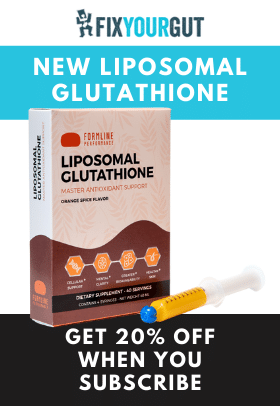I suffered from a incisional abdominal wall hernia when I was an adolescent. My appendix burst, and later exploratory surgery had to be performed to drain abscesses. The incision left me with a massive scar and a weak abdominal wall. I then developed an incisional hernia and had an artificial mesh repair to fix the issue. I remember that before I was officially diagnosed that I looked pregnant even though I only weighed 130 pounds. I am lucky; I do not have the major issues associated with hernia mesh repair. You have probably seen the commercials about people having a hernia mesh repair and suffering from severe pain, inflammation, infection, and even rejection. Many people have become severely disabled from the surgeries and some have died. There are better hernia repair techniques then having a synthetic mesh to reinforce a hernia. So, if you have an abdominal hernia what are the differences in the surgeries and what can be done to help you recover?
All About Abdominal Wall Hernias1 2 3
An abdominal wall hernia is a weakness of abdominal muscles or the abdominal connective tissues that may cause many health issues in those who suffer from them. Hernias either can be congenital (from birth) or acquired (from injury or disease). There are three different types of known abdominal wall hernia’s, umbilical, epigastric, and incisional.
The risk factors for developing an abdominal hernia include being male, old age, and inherent abdominal weakness. Other risk factors include if you frequently lift very heavy objects, weight lifting, prior invasive abdominal surgery, chronic cough or vomiting, constipation, sports injuries, and general accidents. Symptoms of an abdominal hernia include protruding or bulging hard skin/muscle mass in the abdomen, pain or occasional numbness in the abdominal area (rare because most hernias are asymptomatic for quite some time, more likely for strangulated hernias). Obstructive hernias may cause nausea, vomiting, and fever if the herniated tissue blocks the functioning of the intestines. Strangulated hernias and obstructive hernias are medical emergencies in some cases because of the potential loss of blood supply to specific areas or bowel obstruction.
Abdominal hernias are treated with surgical repair by mesh repair method, older tension repair methods, tension-free repair method, and the Shouldice repair method. As someone with a hernia abdominal mesh repair performed more than ten years ago, I would recommend the Shouldice repair procedure if all possible.
Abdominal Hernia Repair Methods
Tension Repair
Tension repair was the first hernia surgery method to be developed in the late 1800’s. During a tension repair, parts of the herniated tissue are pushed back in their proper place. Layers of the herniated tissue are then sutured or stapled together to the surrounding muscle tissue. The abdominal muscles are then slid over the hernia hole and are sewn together to reinforce the area without the use of any mesh. All materials used in a standard tension repair stay in the body and are not absorbed. These materials are left to put “tension” on the hernia to keep the tissue in place.4 5 6
This form of repair can be more painful and require longer recovery time than the other procedures because of the permanent tension in the herniated area.7 8
Mesh Repair
There are many different types of mesh repairs. During a standard mesh repair, plastic mesh is placed over or inside the herniated tissue to reinforce and patch the affected area. Most plastic meshes are made from polyethylene, polypropylene, polyester, or a mixture. A proper plastic mesh repair depends on scar tissue to grow into the mesh properly, forming a large layer of scar tissue to help reinforce the repair. The scar tissue will eventually shrink, and sometimes creates a mass of fibrous tissue compressed together with a plastic mesh that may cause many complications including strangulation and chronic pain. Polypropylene meshes are estimated to contract between 30% to 50%. Woven artificial meshes and the use of sutures are associated with less shrinkage than tacks. Polypropylene and polyester meshes can erode into the bowel causing severe obstruction and inflammation if they are not lined. Dexon mesh material and Vicryl sutures should not be used if possible, hernia reoccurrences have been noted as 100% within three to six months. Most mesh repairs are laparoscopic surgeries.9 10 11 12 13
During a laparoscopic hernia repair with mesh, three small openings are made in the abdomen. The abdomen is then filled with carbon dioxide gas so that the surgeon can see the abdominal organs through different tiny cameras that display the images on the screen. Other medical instruments are inserted through the openings and are used to insert dissolvable staples/screws to anchor the mesh to the herniated tissue in the repair of a hernia. Most of the staples or screws dissolve in a few weeks, but the mesh always remains. Although a laparoscopic repair is described as a minimally invasive surgical procedure, it does require three incisions and deep surgical intervention that may cause significant scar tissue and tissue trauma. 14 15
Biological meshes developed from human donated, bovine, or porcine tissue are newer and may have fewer issues associated with synthetic meshes. The biological meshes seem to reinforce the herniated tissue so that it can heal with fewer scar tissue formation and adhesions. Biological meshes are associated with less mesh erosion, meaning the mesh is less likely to erode through skin, tissues, and organs, causing exposure or perforation. Biological meshes do have a few issues including human grafts to be more prone to eventration (protrusion of a hernia) and xenografts (grafts from animals) linked to reoccurrences if used as a bridge. The biological mesh’s also either partially dissolves or fully dissolves. The organic meshes have not been out on the market long enough yet for me to make a full recommendation, but I believe they are better than most artificial meshes.16 17
Mesh repairs are associated with many additional complications compared to other repair procedures. If a severe infection, inflammation, or chronic pain develops, the meshes in most cases must be removed. Artificial meshes are more associated with chronic inflammation because of a non-biological foreign object being embedded in the body. In some cases, the body rejects the mesh, which leads to severe pain, obstruction or strangulation, and requires immediate surgery.18 19
Shouldice Repair
The Shouldice repair is performed in a specialized hospital in Canada. Specially surgeons trained mainly in the procedure also perform the surgery. During the Shouldice repair, the herniated tissue is repaired by overlapping and reinforcing each affected muscle layer. The reinforced herniated tissue is then stapled together with absorbable sutures for a short-term tension repair.
During the procedure, they also search for hernias in the localized area and repair them, as well. This procedure is known for faster recovery times, lower instances of hernia recurrence, and less postoperative pain and complications. Surgical recovery occurs within a week.
Abdominal Hernia Surgery Recovery Protocol
L-glutamine is the most abundant amino acid and helps rebuild both the stomach lining and the gut.20
Probiotics help protect the gut from opportunistic bacteria.
Curcumin is to reduce inflammation and improve the integrity of the mucosal barrier.21 22
The body makes N-acetylglucosamine to increase mucus production in the stomach and gut and to make a protective barrier.
The zinc carnosine should help repair the stomach lining.
Collagen might help your intestines recover from the surgery faster.
Vitamin D is important for proper regulation of the immune system and in preventing leaky gut.
- Beers, Mark. The Merck Manual, Merck Research Laboratories, 2006. ↩
- Tamparo, Carol, Lewis, Marcia. Diseases of the Human Body, F. A. Davis Company, Feb. 11, 2011. ↩
- Smith, Margaret, Morton, Dion. The Digestive System: Systems of the Body Series, Churchill Livingstone, November 18, 2011. ↩
- Beers, Mark. The Merck Manual, Merck Research Laboratories, 2006. ↩
- Tamparo, Carol, Lewis, Marcia. Diseases of the Human Body, F. A. Davis Company, Feb. 11, 2011. ↩
- Smith, Margaret, Morton, Dion. The Digestive System: Systems of the Body Series, Churchill Livingstone, November 18, 2011. ↩
- https://www.ncbi.nlm.nih.gov/pmc/articles/PMC3306028/ ↩
- https://www.ncbi.nlm.nih.gov/pmc/articles/PMC4477030/ ↩
- Beers, Mark. The Merck Manual, Merck Research Laboratories, 2006. ↩
- Tamparo, Carol, Lewis, Marcia. Diseases of the Human Body, F. A. Davis Company, Feb. 11, 2011. ↩
- Smith, Margaret, Morton, Dion. The Digestive System: Systems of the Body Series, Churchill Livingstone, November 18, 2011. ↩
- https://www.ncbi.nlm.nih.gov/pmc/articles/PMC3306028/ ↩
- https://www.ncbi.nlm.nih.gov/pmc/articles/PMC4477030/ ↩
- https://www.ncbi.nlm.nih.gov/pmc/articles/PMC3306028/ ↩
- https://www.ncbi.nlm.nih.gov/pmc/articles/PMC4477030/ ↩
- https://www.ncbi.nlm.nih.gov/pmc/articles/PMC3306028/ ↩
- https://www.ncbi.nlm.nih.gov/pmc/articles/PMC4477030/ ↩
- https://www.ncbi.nlm.nih.gov/pmc/articles/PMC3306028/ ↩
- https://www.ncbi.nlm.nih.gov/pmc/articles/PMC4477030/ ↩
- https://www.ncbi.nlm.nih.gov/pubmed/11533310 ↩
- https://www.ncbi.nlm.nih.gov/pubmed/26007179 ↩
- https://www.ncbi.nlm.nih.gov/pubmed/28249988 ↩







Hi John, I know this is an older article but I really appreciate it! I developed reflux postpartum with my 2nd son after being on multiple rounds of antibiotics for mastitis. Around this time, I also developed an umbilical hernia. I discovered after doing a lot of research and asking for a lot of tests that I have methane SIBO. I’m wondering if the two could be connected. My dr. recommended just leaving the hernia be if it’s not bothering me. What are your thoughts on that? Thanks so much for all the info you provide!
Hi John, thanks for the informative article on the different types of hernias and various surgical approaches to dealing with them (did you, by chance, accidentally leave out inguinal hernias?). I agree with you that hernia mesh is best avoided if possible, and that the Shouldice method is preferred. I wrote a blog post of my personal experience with hernia mesh and wanted to share in the hope that it might be of value to others: https://www.gutresolution.com/hernia-mesh-a-story-of-deception-tragedy-and-hope/